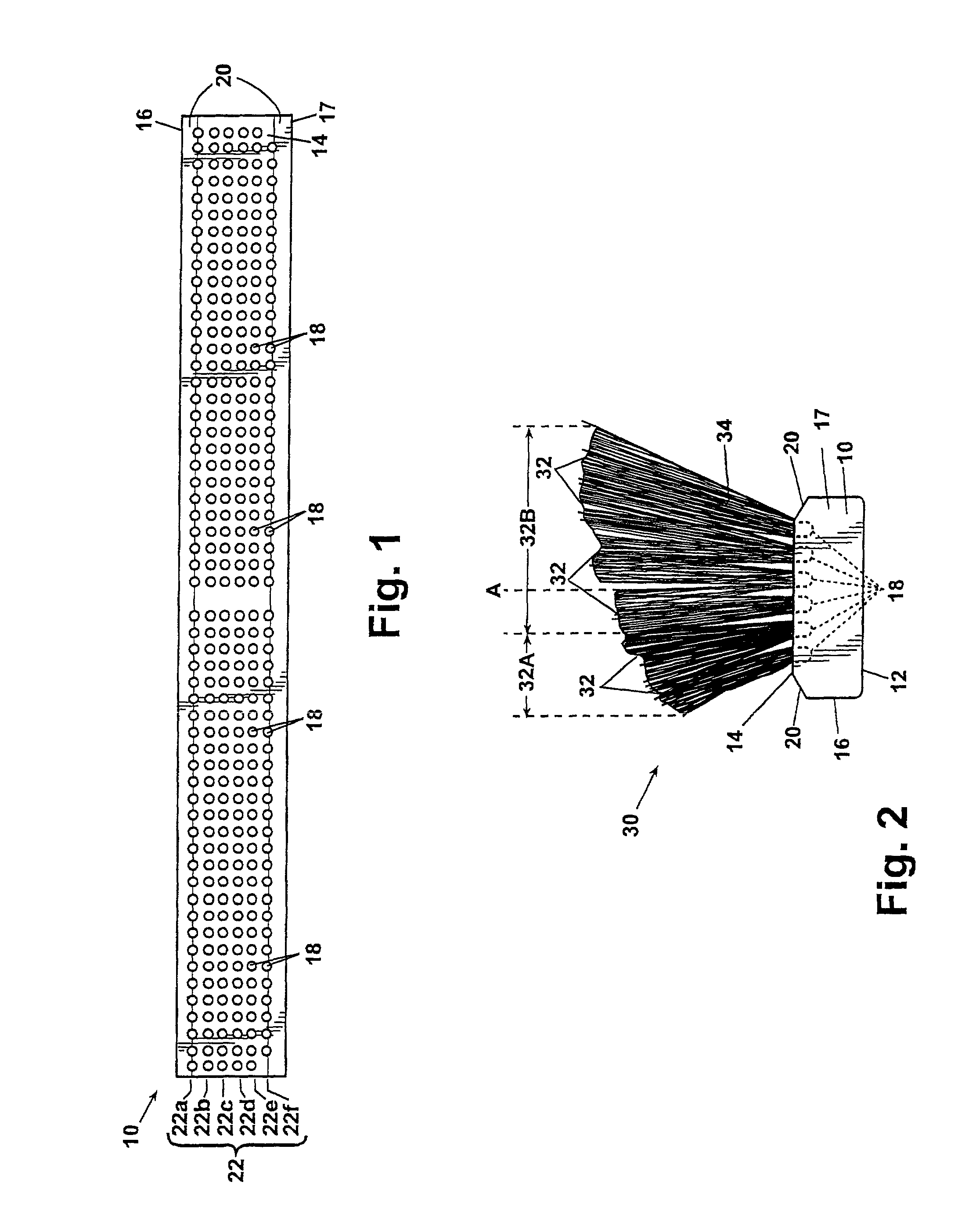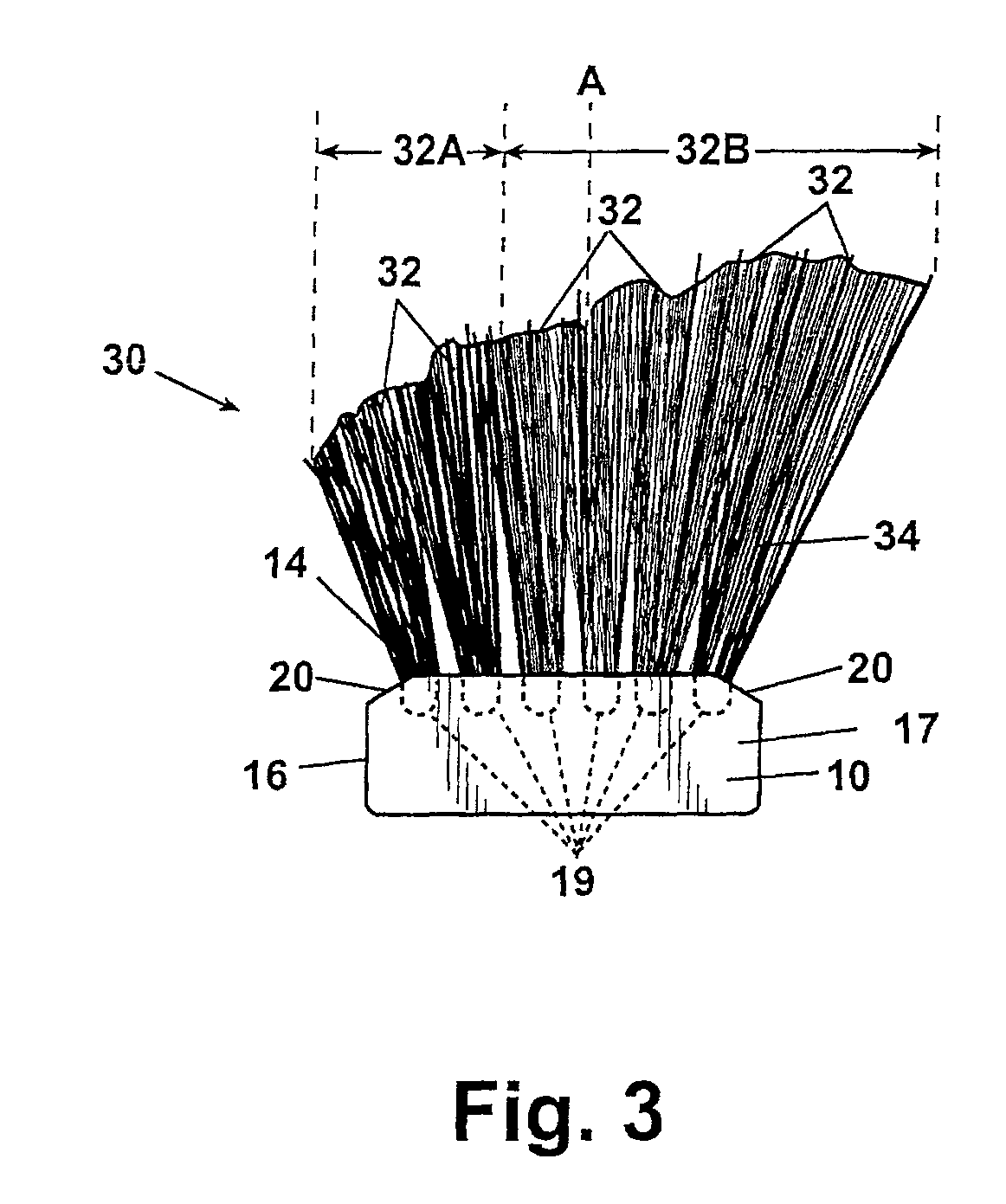Push broom head
a broom head and sweeping technology, applied in the field of broom heads, can solve the problems of reducing the service life and effectiveness of the broom, wasting the effectiveness of a significant number of bristles, and not being able to operate effectively on a wide range of surfaces, so as to reduce the likelihood of sweeping, prevent or reduce the likelihood, and reduce the effect of friction resistan
- Summary
- Abstract
- Description
- Claims
- Application Information
AI Technical Summary
Benefits of technology
Problems solved by technology
Method used
Image
Examples
Embodiment Construction
[0021]Referring now to the drawings, the preferred embodiments of the present invention are described in detail. Turning first to FIG. 1, there is shown a bottom view of a push broom head base 10. Base 10 includes an upper surface 12 (not visible in this figure), a lower surface 14, a leading edge 16, a trailing edge 17, and a plurality of seats 18.
[0022]The base 10 is preferably oblong or rectangular in shape. However, in carrying out the present invention, the shape of the base 10 is not so limited and may be modified in various ways without departing from the present invention. As shown in FIG. 1, but perhaps better illustrated in FIG. 2, the base 10 may, if desired, include one or more chamfered segments or inclined portions 20. When employed, such inclined portions 20 can provide certain advantages—as discussed further herein.
[0023]As illustrated, base 10 includes a plurality of attachment points or seats 18. The seats, which are preferably drilled and are generally round or ov...
PUM
 Login to View More
Login to View More Abstract
Description
Claims
Application Information
 Login to View More
Login to View More - R&D
- Intellectual Property
- Life Sciences
- Materials
- Tech Scout
- Unparalleled Data Quality
- Higher Quality Content
- 60% Fewer Hallucinations
Browse by: Latest US Patents, China's latest patents, Technical Efficacy Thesaurus, Application Domain, Technology Topic, Popular Technical Reports.
© 2025 PatSnap. All rights reserved.Legal|Privacy policy|Modern Slavery Act Transparency Statement|Sitemap|About US| Contact US: help@patsnap.com



